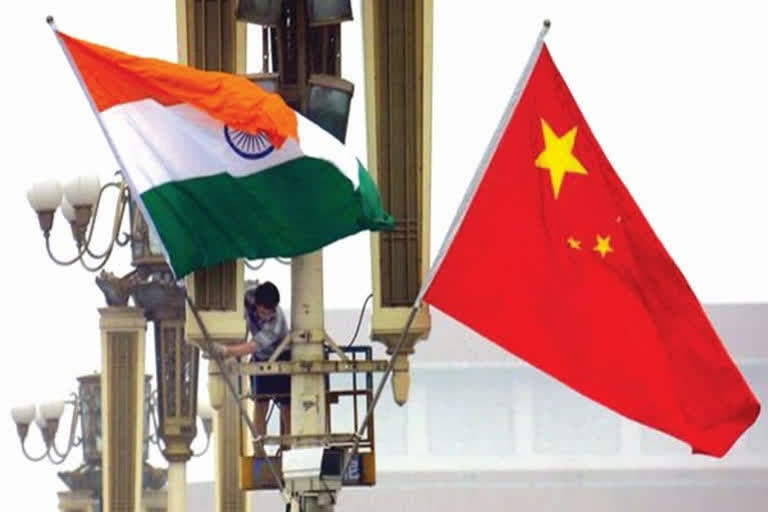New Delhi:On this fateful night of 15/16 June 2020, in the windswept, icy cold Galwan Valley, the architecture of Confidence Building Measures (CBMs) between India and China, established since 1988, was finally laid to rest. This day was on the horizon for over a decade.
The bottom-line is the architecture of the Protocols and the CBMs that govern the management of the Line of Actual Control (LAC) is the four formal agreements of 1993, 1996, 2005 and 2013. The 1993 Agreement on Maintaining Peace and Stability stipulated that the two sides will not use force or threaten to use force and respect and obey the actual control line.
The 1996 Agreement laid down CBMs and was like a no-war pact stating that neither side shall use its military capability against the other side. It also prohibited any use of hazardous chemicals, conduct blast operations or hunt with guns or explosives within two kilometres of LAC.
The 2005 Protocol decried that if the border personnel of the two sides come to a face-to-face situation due to differences on the alignment of the Line of Actual Control or any other reason, they shall exercise self-restraint and take all necessary steps to avoid an escalation of the situation.
It clearly laid down that the both sides’ soldiers on coming face to face, shall cease their activities in the area, not advance any further, and simultaneously return to their bases. Throughout the face-to-face situation, neither side shall use force or threaten to use force against the other and treat each other with courtesy and refrain from any provocative actions.
The India-China Border Agreement of 2013 emphasised that neither side shall use military capability against the other side, and that their respective military strengths shall not be used to threaten or attack the other side.
With the experience of face offs over the years, a caveat was added that the two sides shall not follow or tail patrols of the other side where there is no understanding of the LAC. Again there was insistence to exercise maximum self restraint, refrain from any provocative actions, treat each other with courtesy and prevent exchange of fire or armed conflict.
The 1996 and 2005 Agreements gave rise to the functional protocols and drills of face-to-face encounters of patrols like the banner drills, with banners repeating the exhortation of returning back to base, and follow it as necessary with Border Personnel Meetings (BPMs) as designated places.
To be truthful, in a very large number of face-offs this procedure has been followed to the hilt, the troops disengaged and moved to their respective bases. There were sporadic incidences of scuffles and fisticuffs, which were later discussed at the BPMs. It must be categorically stated that weapons were always carried by the troops, albeit in safer mode, and suitable army drills were followed.
In the last eight years, many incidents had occurred wherein there were gross violations of protocols. These had happened in Raki Nalla, Chumar, Pangong Tso, Demchok and Doklam, when the Chinese troops refuse to move back despite execution of the protocols, and the face offs were prolonged. A gradual weakening of protocols was evident.
The recent incidents in Eastern Ladakh, at Pangong Tso, Galwan Valley and Hot Springs-Gogra have brought to the fore, the near-failure of existing Protocols and CBMs. First in Pangong Tso and on 15/15 Jun at Galwan total savagery and cruelty was at display by the Chinese troops in the brawls and fisticuffs, where they used medieval weapons like nail-studded clubs, rods with barbed wire and knuckle dusters against Indian troops, in total disregard to Conventions and Protocols. These primitive weapons were available with them signifying a premeditated plan. Indian Army lost 20 brave-hearts at Galwan Valley on 15 June 2020, in bizarre display violence by the Chinese.
It is time to reassess the gamut of management of LAC. Despite 15 meetings of the Joint Working Group between 1988 and 2005, and 22 meetings of the Special Representatives since then, there has been no progress on demarcation of the LAC.
Apparently the Chinese do not wish to move forward on this, in their desire to hold leverage on India. At LAC the Chinese have proven to be most unreliable, have been attempting to gradually push-in and acquire additional territory, and refuse to vacate thereafter. In doing so, they do not hesitate to use force. There will also be significant trust deficit about the Chinese.
It must be recognised that soldiers have a right to defend themselves or their unit against imminent threats. This is known as the right to individual or unit self-defense, which allows soldiers to protect themselves against immediate threats, regardless of other limitations on their use of force.
In appreciation to the open-ended nature of Chinese threat, the rules of engagement must be amended in the favour of the Indian Army soldier, to undertake protective deployment as tactically considered necessary, and to use firearms, to protect himself and the unit. It is essential to mention, that soldier will not resort to pettiness of using medieval weapons that the Chinese have used, for that is not his wont, and that is not how he is trained.
The life of each soldier of the Army is extremely precious to the Nation. The Nation cannot allow her soldiers to go on for border protection or defence, with handed tied by diplomatic protocols and CBMS. The latter can be renegotiated. New rules of engagement must be promulgated soonest.
Also Read:Corps Commander-level meeting between India, China begins in Ladakh
